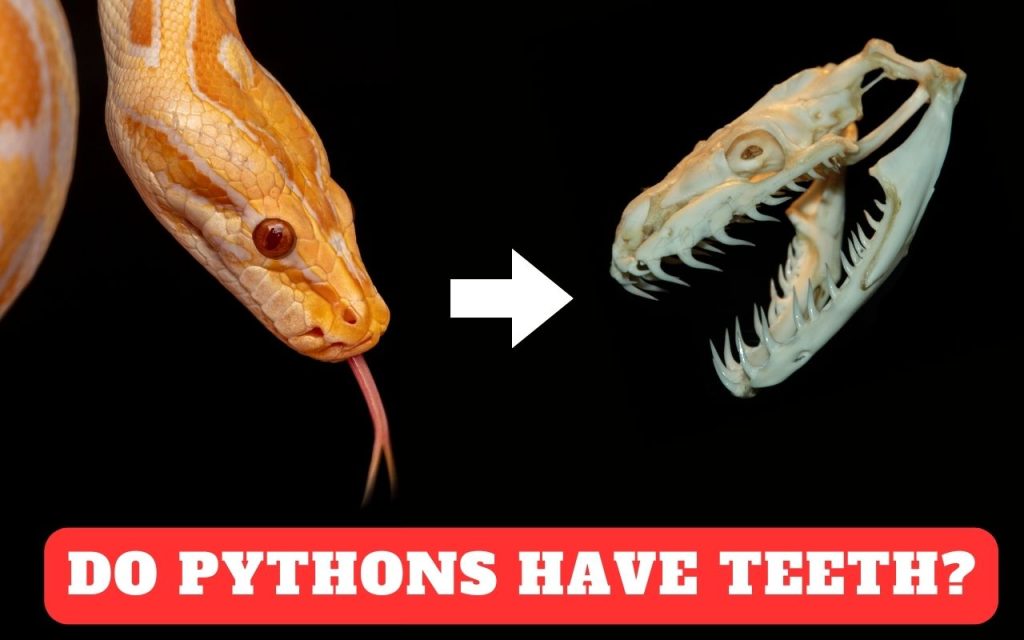Despite being powerful constrictors, pythons have teeth – a whole mouthful, in fact. Keep reading to learn why they have teeth and how they use them…
The main function of python teeth is to grasp prey and help swallow it. This means they must be backward-pointing so that they have an excellent grip. Unlike the fangs of venomous snakes, python teeth are solid, and mostly all similar in size. Most species have around 110 teeth.
Teeth vs Fangs
In this article, we’ll take a look at the teeth that various python species have, and what to expect from a bite. First though, let’s take a quick look at how python teeth are different from venomous fangs, using Viperid fangs as an example.
Viperids (such as Rattlesnakes) are the most highly evolved venomous species, having both very specialized fangs and a unique anatomy to support them. Pythons, on the other hand, are old-fashioned constrictors, whose teeth are used purely for gripping, rather than killing.
| Characteristic | Python Teeth | Viperid Fangs |
|---|---|---|
| Location of teeth | Evenly spaced along jaw | Two large fangs at front of upper jaw |
| Tooth shape | Conical, backward-facing | Long, needle-like, downward-facing when erect |
| Function | Grasping and holding prey | Injecting venom into prey |
| Internal structure | Solid | Hollow so that venom can flow through them |
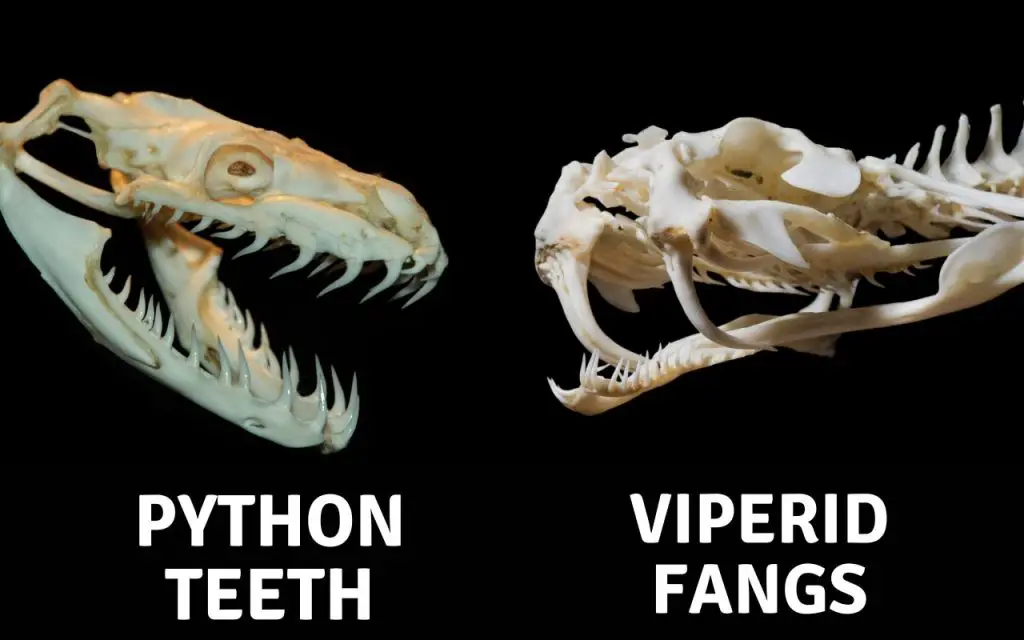
Do burmese pythons have teeth?
Burmese pythons are a notorious species of snake because of their invasive population in Florida. Despite being constrictors, Burmese pythons have razor-sharp teeth that are curved backwards.
This is because to constrict prey, snakes need to initially grab it, and hold on to it. Their teeth are basically their version of fish hooks. Between 80 to 120 teeth, arranged in several rows, are present in Burmese pythons, depending on their size and age.
Pythons, including Burmese Pythons, have a total of 6 rows of teeth. In their upper jaw, they have two on the left and right maxilla bones (like us) and an additional two on the palatine and pterygoid bones (equivalent to the palate area in humans). In their lower jaw, they have one row on each dentary bone (equivalent to the mandible in humans).
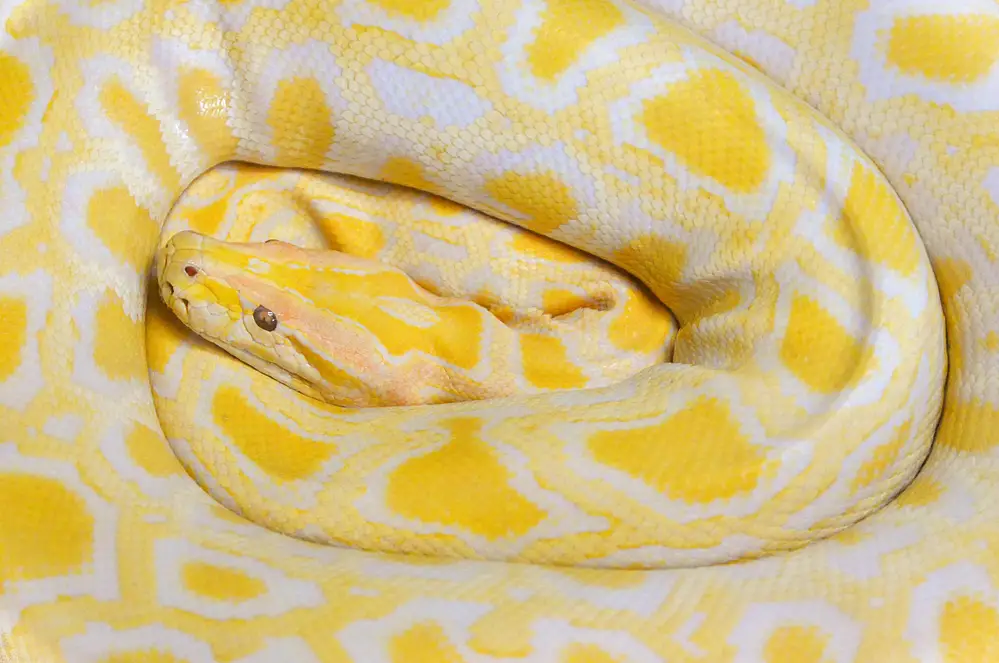
Do python bites hurt?
Yes they do. Simple as that! Big pythons have big teeth, that give a really nasty needle-poking sensation when they bite you. Kind of like getting lots of shots at a time. Having been bitten by lots of snakes, including pythons, I particulary dislike the sensation of being bitten on the fingertips.
That said, small pythons don’t hurt much, and pet species like Ball Pythons don’t give bad bites. It’s more like a quick tap and scratch. It bleeds a bit, but doesn’t have a lot of strength to it.
My personal opinion is that bites from animals with strong jaws are much more painful. I’ll take a small-to-medium-sized python bite over a dog or snapping turtle bite any day of the week.
Do reticulated pythons have teeth?
Reticulated pythons do indeed have teeth, in a very similar number and arrangement to the Burmese Python that we discussed earlier. About 100 teeth make up these pythons’ mouths—70 in the top and 30 in the bottom jaw. The teeth are covered by the gums, so you cannot see them.
In the wild, they consume birds, rats, pigs, deer, and even monkeys. Some of these animals are quite large, and put up a good struggle when grabbed by a Retic’.
So, their large, recurved teeth are absolutely essentially to its hunting strategy. Having a good grip on large prey stops them wrestling free, but also prevents them from manoeuvring and counter-attacking.
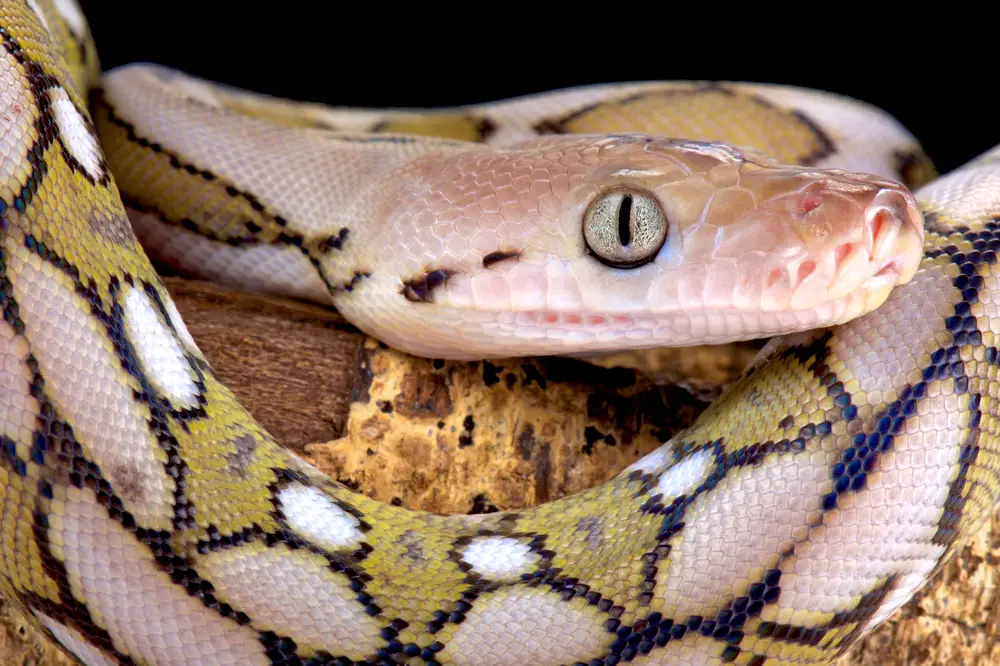
Do pythons bite humans?
Ball pythons rarely bite and have a very calm personality. That’s one of the reason’t they’ve become so popular in the pet trade, despite their often large size.
Ball pythons in particular are more prone to curl up in a ball to protect their heads when they feel intimidated. This is how they got their name, after all.
That said, some species are admittedly a little more defensive, and may nip – especially when young. Most of them actually tame down really well with age when captive-bred, though. These include:
- Green Tree Pythons (both Morelia viridis and Morelia azurea)
- The Central African Rock Python (Python sebae)
- The Southern African Rock Python (Python natalensis)
- White-lipped Pythons (both Bothrochilus albertisii and Bothrochilus hoserae)
- The Blood Python (Python brongersmai)
- Short-tailed Pythons (both Python curtus and Python breitensteini)
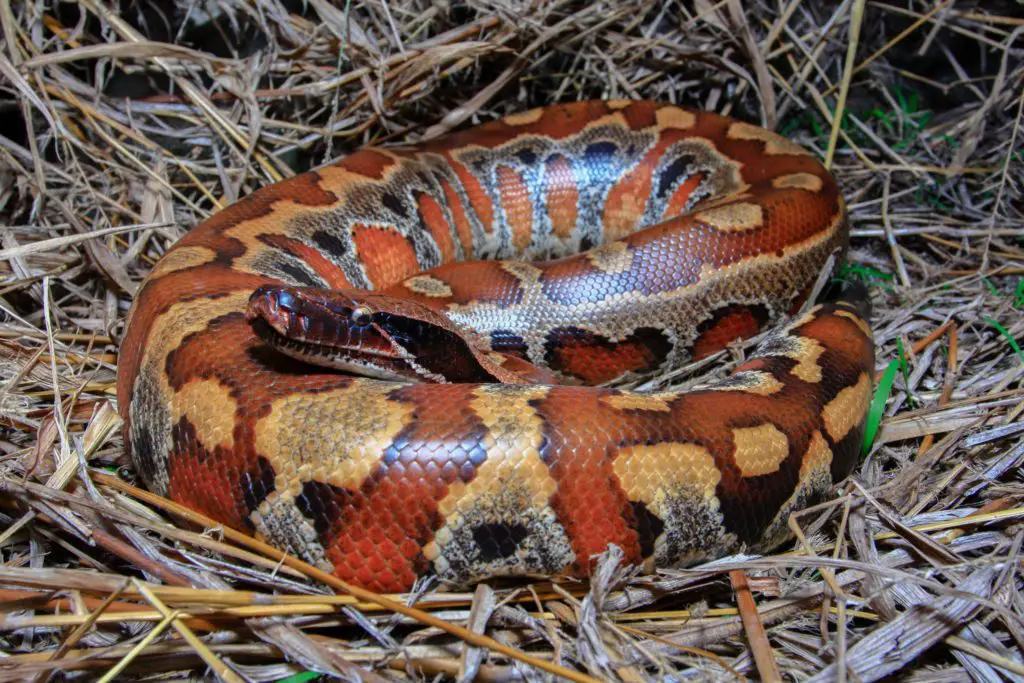
What does a python bite feel like?
Pythons do not have venom, so there will be no systemic effects from their bite. It’s a purely mechanical wound. It feels just like lots of little needles sticking in you at once.
Obviously, the bigger the python, the more painful the bite. Very large Burmese, African Rock, and Reticulated Pythons can actually touch bone with their fangs if they land a good one on you.
Generally speaking, however, a python bite doesn’t feel bad for very long. The reason for this is that when they bite us defensively, it’s only a warning. They give you a quick tap, and no matter big the python is, it’s over in a flash. You don’t really have time to notice what it feels like.
Now if a big python thinks you’re food, then that’s something altogether different. It will hang on, and it will be pretty painful. If you keep a python as a pet, always use tongs to feed it, and exercise caution every. Single. Time.
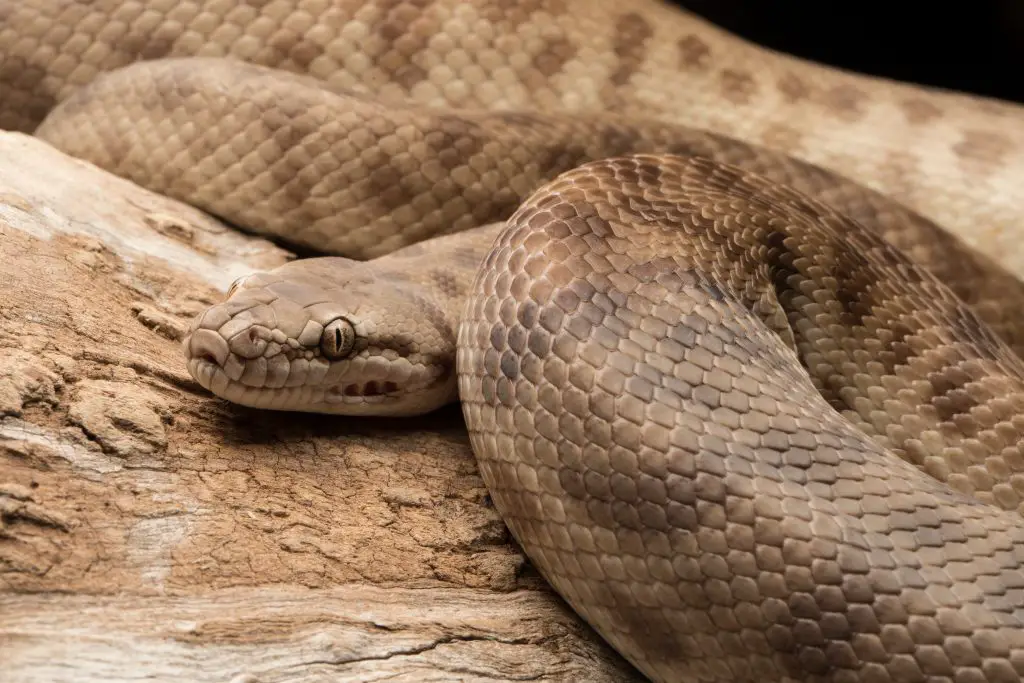
Do pythons have venom?
Pythons do not have venom, for a couple of reasons. The main one obviously being that they are constrictors. Being big and muscular, constricting is the most efficient way for them to kill their prey. Why go to the huge energetic expense of producing venom when you’re already maintaining a constrictor’s musculature?
Another reason is their evolutionary history. They developed constriction millions of years ago, and have occupied ‘the large constrictor niche’ ever since.
Other snakes like Elapids, Viperids, and some Colubrids have evolved venom, and use this instead of constriction. With them filling the venomous snake niches, it never made sense for pythons to develop venom themselves.
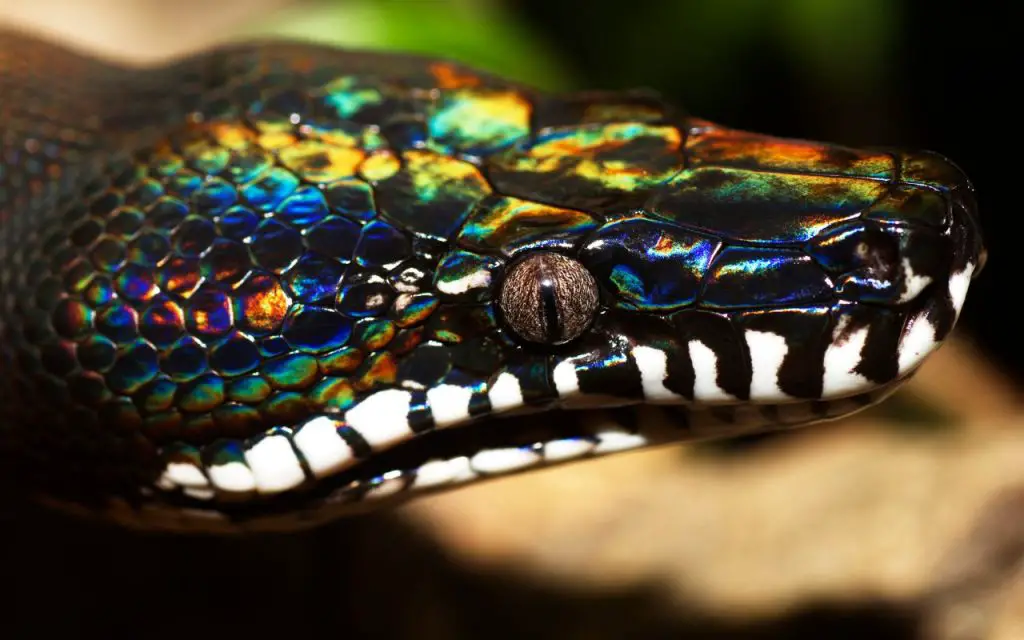
Do any pythons have fangs?
No pythons have fangs. When we talk about fangs, we’re talking about teeth that are specifically modified to deliver venom. As they are non-venomous, pythons have no use for real fangs.
That said, there are two species that have extra-long teeth, that look a lot like fangs (and hurt quite a bit when they bite you). They are the Green Tree Pythons (Morelia viridis and Morelia azurea) of Australasia.
As arboreal predators, they need particularly long teeth to grip agile prey that could fly or leap away. Theire fang-like chompers also help them avoid dropping prey down to the forest floor.
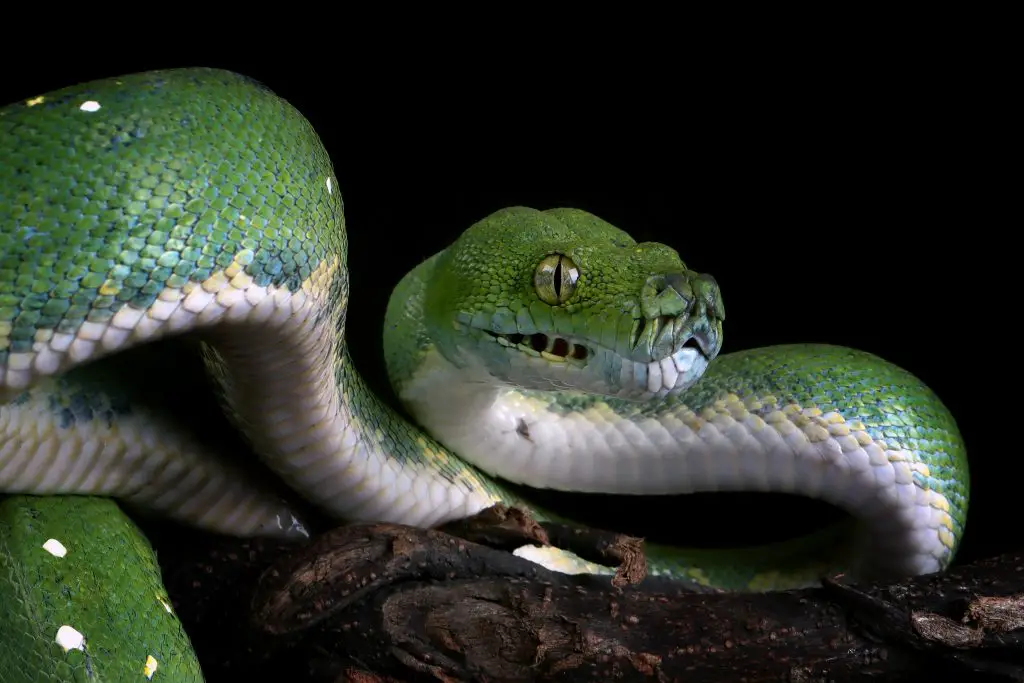
Ball python bite
For individuals who keep snakes as pets, ball pythons are a common pet. Although they are generally calm, they could bite you for any number of reasons.
If your pet Ball Python does bite you, you don’t need to worry about any kind of serious injury. It will be a little scratch that bleeds a little.
Nonetheless, you should still wash it thoroughly with soap and water, and keep an eye it for a possible infection (which is very unlikely).
What happens if a ball python bites you?
If a Ball Python bites you, not a lot will happen. They just aren’t big enough to do much damage. However, this should provoke a reaction from you.
Whenever a docile species bites, you need to figure out why, in case there is something wrong with your snake. After all, this is out character, and something could be irritating it. Check its:
- eyes – is it grumpy because it’s getting ready to shed?
- temperature – is it correct on both sides of the enclosure?
- humidity – is it high enough for shedding?
- hygiene – is there a mess you’ve missed?
- scales – are there any blisters or signs of disease?
- breathing – is it wheezing or bubbling? THIS ONE MEANS SEE A VET IMMEDIATELY
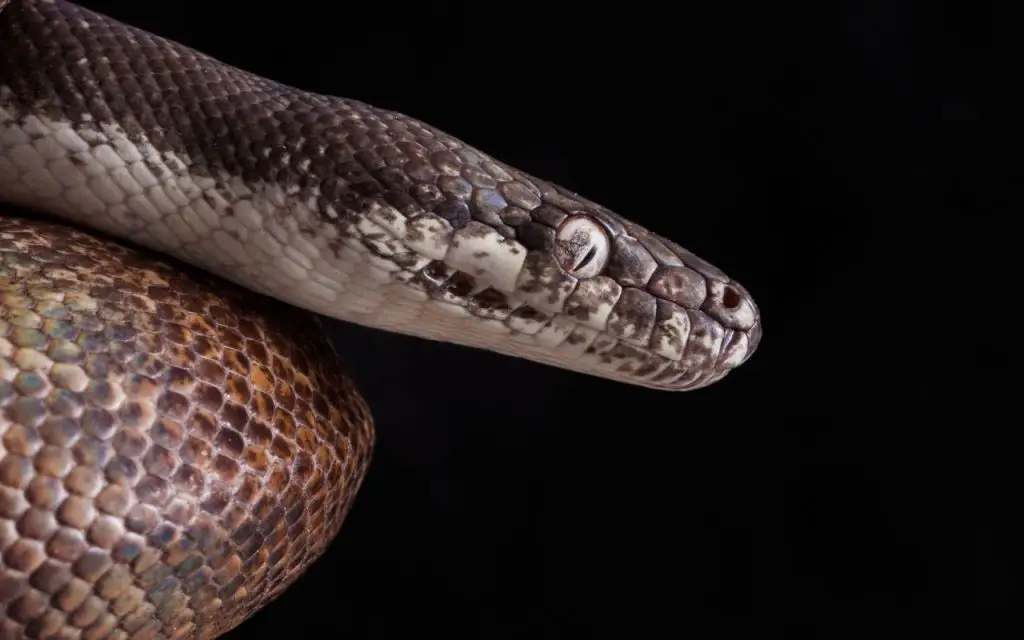
Do baby ball pythons have teeth?
Naturally, baby ball pythons do have teeth as well. The size of their teeth is related to their body size. When first hatched, they already have teeth large enough to catch small rodents, and are capable of constricting fuzzy mice or rat pups.
Baby ball pythons don’t really have “baby teeth,” unlike mammals. Their first teeth are identical to their adult teeth. They instead rely on normal tooth loss to swap out their baby teeth for bigger ones as their bodies develop. The teeth grow, full out, and are constantly replaced, much like in sharks.

FAQ relating to do pythons have teeth?
What happens if a python bites itself?
Generally, nothing happens if a python bites itself. Very occasionally, this happens during feeding, and I’ve never seen a serious injury or infection as a result. A bite from a rat is much more likely to cause issues.
What is deadliest snake in the world?
According to Britannica, the saw-scaled viper, also known as Echis carinatus, is regarded as the “deadliest snake” in the world. According to reports, this particular kind of snake has killed “more people than all other species of the snakes put together.” The saw-scaled viper’s venom is not as deadly as that of other snakes; it is much more aggressive.
What’s the most poisonous snake on earth?
With a murine LD 50 value of 0.025 mg/kg SC, Oxyuranus microlepidotus, also known as inland taipan, is regarded as the most poisonous snake in the entire world.
What animal is immune to snake venom?
Hedgehogs, skunks, the Opossum, some snakes, Mongeese, and the Honey Badger have all demonstrated resistance to snake venom. Some researchers even think that the opossum may help make antivenom because its blood contains a peptide that neutralizes venom.

